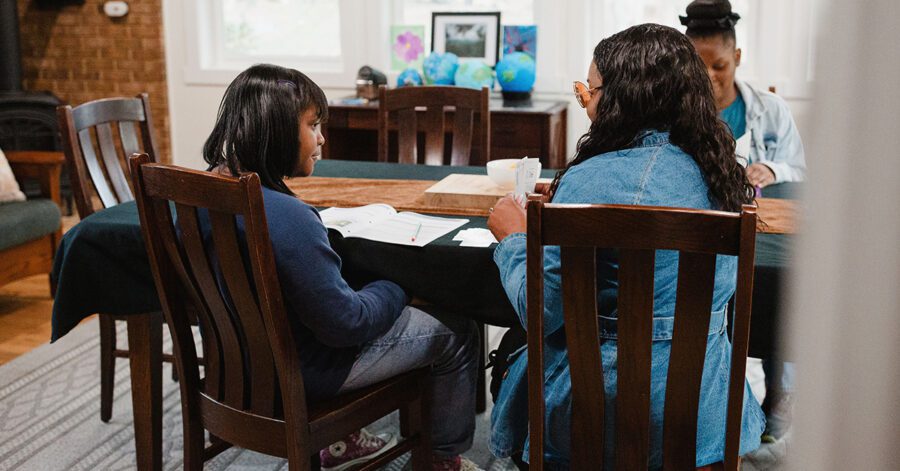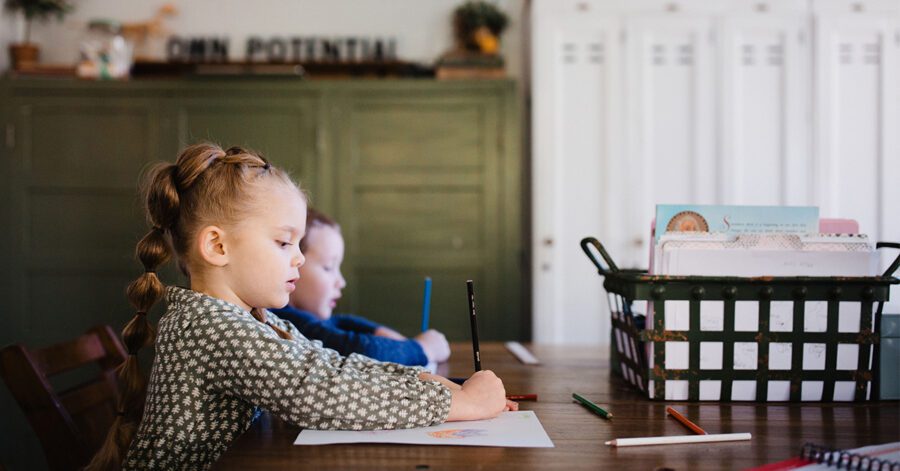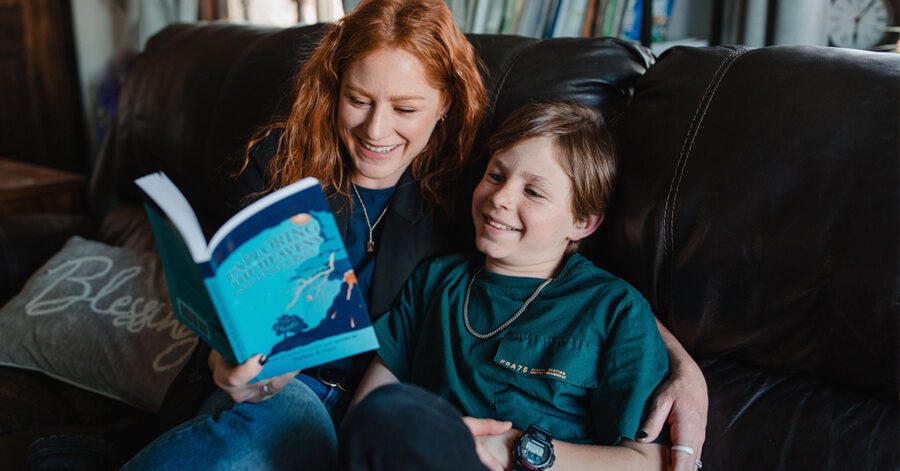Enjoy this article from our partner, Secret Garden Educational Pathways. The views expressed are the author’s own and do not reflect the official position of Classical Conversations.
Are you a parent whose student has a learning disability or suspected learning disability, but you have chosen to homeschool? Have you also felt pressure to send your student to public school, due to the services they tout?
If so, then this blog is for you, and you are not alone! I’m Margret Walsh, a special education and literacy intervention specialist and founder of Secret Garden Educational Pathways. I want to share a few tidbits of insight with you based on my experience and educational background that I hope will prove helpful and reassuring in your God-given journey as parents and educators. It has been my privilege to have worked with hundreds of families over the past decade, and I hope that these tips will aid and guide you in educating your children at home.
It has never been more important to guide and protect our children than in this current world and you are stepping up to the plate to do so. The bottom line is, yes, it is possible to homeschool with a student who struggles with learning. It may be a different journey, but it is often better than the route the public schools offer.
Homeschooling Special Needs: You’re Not Walking This Path Alone
You Are Not Alone
A concept I’ve encountered is that many parents feel isolated and alone in their journey with struggling students. Yes, you are pioneers in educating your students with learning struggles at home, but that is ok and is the journey God is calling you to.
There are countless other homeschooling families that also have students who struggle and they problem solve and come up with solutions to push through. These other families may not mention that they have one or more students who struggle to learn, but they are there too. The endurance I’ve seen in homeschool families over the years is nothing short of admirable.
The sacrifice and love parents have for their students is an example we should all follow. Even though it may seem like you are alone, you are not. The incidence of learning struggles in students who are tested, usually in schools, is 1 in 5. This is also the case (anecdotally) in homeschooling families.
Is This My Fault?
When speaking with parents over the years, another concept and common phrase is, “It must be my fault,” or, “I didn’t spend enough time with my student because I was also educating other students.” Yes, these are realities, but most of the time, these are not the cause of a learning disability.
Often, a learning struggle is based on how the student processes information, which can result from various causes, some of which are even genetic. It is easy to blame yourself when you see your students suffering through their homework, but you are probably not the reason they struggle, so remember that as you educate your children. Instead of blaming yourself, devise a plan and move forward with courage and the knowledge that God will give you all the insight you need to know what your student needs.
You are doing the hard work of educating your students, but you will reap great benefits and graces by protecting their hearts, souls, and innocence within the sanctuary of the home. And you are not alone, for God is with you!
Homeschooling with Special Needs: Growth Through Grace
Literacy Milestones Homeschool Parents Should Know
There are a few milestones and symptoms to keep in mind when raising and educating your children. One benefit of brick-and-mortar schools is the possibility of comparison within one grade. However, educating your children at home can make it hard to tell if your student is on track or slower than he/she should be. Sometimes, students are just maturing more slowly, but don’t have a learning disability. Other times, students may have a learning disability, and knowing what signs to look for is important.
Language Development Homeschool Milestones
Though some students may be late bloomers, here are some language and literacy milestones to keep in mind:
- Kids should be using short 4-6 letter words by the time they are 12-17 months
- Kids should have a 50+ verbal vocabulary by the time they are 23 months
- Kids should be able to identify and group items by 4 years (think sorting exercises)
- Kids should have a concept of time sequencing, actively engage in conversation and be able to contribute 8-word sentences by the time they are 5 years
- Kids should be able to memorize letters and begin learning to read around age 6
- Kids should be able to read one syllable, phonetically regular words by age 7
- Kids should be able to read multi-syllable, phonetically regular words by age 8
- Kids should be able to read no later than 9 years old (and by read, I mean read semi-fluently)
For math, the milestones look a little different:
- Kids should be able to match basic shapes and count on their fingers by age 3
- Kids should be able to sort things into shapes, colors, sizes, etc. by age 4
- Kids should be able to begin adding, using their fingers or manipulatives by age 5
- Kids should be able to skip count to 100 and add/subtract less than 20 by age 7
- Kids should be able to begin some multiplication, as well as transition to non-manipulatives by age 9/10
Learning Disabilities Homeschool: Recognizing the Signs
Does my student have a disability?
Where do I look for help?
Who so I talk to for advice?
What do I do if my student does have a disability or learning struggle?
These are all questions that have run through many parent’s minds. It can feel scary when considering this, but facing the possibility is better than becoming frustrated when your student isn’t learning easily at home.
For many students, figuring out whether they have a learning disability actually brings closure and an explanation, because learning isn’t just hard for no reason, but it is hard because of some struggle that is real. Here are some signs and symptoms that may indicate a learning challenge:
Sensory and Physical Symptoms
Sensory struggle symptoms:
- Sensitivity to certain textures, either avoiding or seeking
- Extreme dislike of certain smells and tastes
- Dislike of physical contact
- Insensitivity to pain or oversensitivity to pain
- Clumsy and uncoordinated
Vision struggle symptoms:
- Headaches
- Eye strain
- Reading difficulties
- No visual endurance
- Tracking struggles
Hearing struggle symptoms:
- Sensitivity to loud noises and situations
- Can hear you, but doesn’t listen
- Inability to follow oral directions
- Inability to replicate certain phonological sounds
- Late talker
Academic Struggle Indicators
Reading struggle/disability symptoms:
- Not reading by age 8
- Struggles to decode larger words
- Guesses words based on context and the first 2-3 letters in a word
- Skips, replaces and misreads small words like articles (the, of, for, from)
- Very slow reader
- Shuts down when he/she sees a large chunk of text and would rather read dialogue
- Skipping lines and words
- Complaints of eye strain and headache
Comprehension symptoms:
- Can read text but can’t summarize
- Remembers random details, but not main parts of the story
- Mis-associates information
- Inability to inference
- Inability to understand analogy
- Need to repeat lessons more than once
- Inability to understand mathematical concepts
- Can’t remember content from day to day
Processing speed and working memory symptoms:
- Inability to follow multi-step directions (whether written or oral)
- Can’t remember letters, numbers
- Can’t learn times tables and math facts
- Very slow learner, school or homework take 2-3x as long as it should
- Struggles focusing and ADHD symptoms
Most of these learning struggles stem from cognitive processing insufficiencies that can be improved. If your student has multiple symptoms, it is not the end of the world, but the beginning of a journey. Maybe this journey is different from what you envisioned for your student and family, but again, there is room for improvement!
You can support some of these struggles at home, and others can be addressed by various professionals, from behavior/developmental optometrists to reading specialists to occupational therapists, and even nutrition. Evaluation and diagnosis should not be dismissed and often bring closure and a sense of direction.
Sometimes, students do just fine without a diagnosis, as long as their parents know how to support them. However, seeking professional advice or diagnosis is ok and recommended. I have spoken with many parents who chose not to pursue an official diagnosis, but we put our heads together to figure out how to support the students at home. I have also worked with many families who come to me with a diagnosis, and it is very easy at that point to determine exactly what needs to be done to support the student. However, choosing to pursue a diagnosis is your choice with your student.
What Schools Offer vs. Homeschooling Special Needs Support
Now, let us turn to a comparison of homeschooling and attending a public school. Many parents have told me they have felt pressured by neighbors, friends, and even family to consider sending their students to public school. This section should explain what schools can offer and where homeschooling actually covers part of the legal “accommodations” they put into their IEP documents (IEP = Individualized Education Plan).
Many public schools promote themselves as having all the resources students with special education need. And they do have all the assistive technology (which they rely on quite heavily), all the “professional” titles, all the paperwork and a lot of verbiage about providing accommodations and modifications for your student.
Public schools also try to provide some interventions, such as speech and occupational therapy. In reality, they often don’t have enough professionals, which means that students don’t get enough intervention time, and the schools fall back on the typical accommodations like extended time and quiet testing.
I will say that the public schools do offer far more for students with severe learning or physical disabilities, and this may be the appropriate placement for students with severe needs if you can’t fund private support yourself. However, for students with mild to moderate special education needs, some alternatives may even provide more support than the public schools.
Homeschooling with Down Syndrome and Tourette’s: Real Mom Advice
Understanding School Accommodations vs. Homeschool Late Bloomers
What Public School Provides
Often, schools are understaffed, and there are higher and higher incidences of diagnosed learning disabilities. This puts strain on the general classroom as well as on the support staff. The two solutions to providing students with an “inclusive” environment are to provide accommodations and modifications.
Accommodations are things like a quiet testing area (separate room usually), extended time for testing, use of a calculator, use of notecards, dictation devices, and anything that will allow the student to complete the work with support.
Modifications are a change to the standard or curriculum, like writing an outline instead of an essay, exempting students from taking certain tests or labs, providing them with abridged copies of books or a different information packet.
Basically, changing the content so that students can access it more easily. This means making the workload easier in general. There are so many ways to make school easier, and this is what the public schools primarily provide.
Homeschool Help That’s Built In
Do all the accommodations and modifications sound familiar? Are you doing these things at home? If the answer is yes, then you are already providing your students with the learning environment promised by the schools as the “solution” to their learning struggles.
In homeschooling, accommodation and modification are already built into the daily routine in the home. Students can work with their “teacher” one-on-one, have a “quiet testing area”, use extended time for tests, use alternative learning materials when needed, and mom or dad constantly adjusts all this at home.
Homeschooling basically provides more than 50% of what the schools tout as support, by the sheer nature of homeschooling. And, parents also know their student far better than any teacher will, which is essential. The only thing missing from your homeschool is the “specialists”, many of whom cannot give your student the minutes needed to make a difference.
*There are some cases where students with severe physical or mental disabilities may be able to receive far more from the schools and state services than the family can provide.
Don’t Stop with Accommodations: Multisensory Literacy Homeschool Approaches
If accommodation and modification are the two primary means of “supporting” students, then the public schools are selling kids short, because though these may help in the moment, life does not have accommodations and modifications. Eventually, this will catch up to kids and make things more complicated when they are adults. It does not solve the real problem of cognitive processing efficiency. One quote from a parent I was working with once was,
“No, my daughter doesn’t need notecards for tests…life doesn’t have notecards.”
Support for students shouldn’t stop with accommodations and modifications. We are finding out, through current research, that students have a huge capacity to improve their learning outcomes because of their mental plasticity. The brain is kind of like a muscle, which can be strengthened when exercised correctly. This is where the real work comes in.
The Accommodation Crutches
Accommodations and modifications are like a set of crutches that a person may need to use for a time, but eventually, you want to throw those away. If accommodations and modifications are used appropriately, in conjunction with good cognitive therapy, speech therapy, occupational therapy, or reading intervention, then the student will be set up to be able to throw the crutches away and run with the rest of the class.
Students can also improve their capabilities at almost any age. In the Spring of 2025, we did a pilot study with eight high school students to determine how much growth they could make in comprehension with very specific literacy intervention. We found an average increase of 2 grade levels! This was huge and showed our team that even though younger students have a greater capacity to improve their learning approach and outcomes, even 17-year-old students have an amazing ability to strengthen their minds.
Practical Multisensory Literacy Strategies for Home
With this in mind, I would encourage families to determine where their student is struggling and then focus on finding a therapy or intervention that will support your student so they can increase their capabilities, improve their cognitive processing, and reach a place where learning is easier and more enjoyable.
Try These Creative Approaches:
For Reading Accuracy Issues: Switch to poetry as a starter for each literacy lesson. Try Old World Echoes, a rich resource that includes stories and poems to spark children’s imaginations.
For Memory Struggles in Content Areas: One of many mnemonic devices is to spend a day looking at and discussing pictures to help create the experience before starting new units. How to Develop a Brilliant Memory offers many creative ideas.
For Processing Speed:
- Use games like Blink and Spot It
- Practice math facts using Quick Flip Arithmetic
- Hunt for letters/phonograms around the house
Remember: Creativity can aid in learning.
Your Homeschool Advantage
It seems that homeschooling actually has the capacity to support students with mild to moderate learning struggles more than we initially thought. If you have chosen this route for your students and family, don’t look back and wonder if the public schools could provide more. Yes, there are some perks to what they offer, but ultimately, they don’t have enough staff to really support students, so they fall back on basics that you are already providing to your students.
And remember that God gave these children to you, because He knew that you would be the best person to care for and educate them. He will never let you down.
Key Takeaways for Homeschooling Special Needs
- You’re not alone in homeschooling special needs: One in five students struggles with learning, and homeschool families naturally provide many of the same accommodations that schools offer through individualized attention and flexible pacing.
- Know the literacy milestones but don’t panic: While it’s important to recognize developmental markers (like reading by age 9), some children are simply late bloomers who will catch up with proper support and patience.
- Focus on strengthening, not just accommodating: Rather than relying solely on accommodations like extended time or modified assignments, prioritize interventions that actually improve cognitive processing through multisensory approaches and targeted therapy.
- Homeschooling provides superior individualized support: The one-on-one attention, flexible scheduling, and intimate knowledge parents have of their children often surpasses what understaffed public schools can offer for mild to moderate learning disabilities.
Looking for more inspiration for your homeschool journey? Check out these resources:





